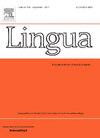更好还是更差的交流者?比较人工翻译和机器翻译在源语言中的跨语域效果
IF 1.3
3区 文学
0 LANGUAGE & LINGUISTICS
引用次数: 0
摘要
本研究基于四个具有可比性的平衡语料库,比较了四种不同语域的中文英译中的 "穿透效应",为区分人工翻译和机器翻译提供了一个新的视角。通过将两种多元技术应用于多种词汇、连贯和句法特征,本研究确定了以下几点。(i) 在人译英和机译英中都能观察到 "穿透 "效应,但这种效应相对有限。(ii) 机器翻译在不同语域中表现出更明显、更持久的 "穿透 "倾向。(iii) "穿帮 "效应与语域有关,在一般和学术文本中的表现强于新闻和小说翻译文本。这些发现证实了 "穿透 "效应是人类和机器翻译文本中潜在的翻译普遍现象。此外,研究结果表明,人类译者对不同语域的社会规范更为敏感,这进一步支持了人类译者在翻译中对语境和交际限制更为警觉的观点。观察到的差异为翻译教育工作者提供了宝贵的启示,他们可以通过考虑翻译规范、语篇限制以及人际和跨文化因素来调整人机协作翻译模式的课程结构。本文章由计算机程序翻译,如有差异,请以英文原文为准。
A better or worse communicator? Comparing human and machine translation in source language shining through across registers
This study provides a novel perspective on the distinction between human and machine translation by comparing the shining-through effect in English translations from Chinese across four different registers based on four comparable balanced corpora. By applying two multivariate techniques to multiple lexical, cohesive and syntactic features, this study identifies the following. (i) The shining-through effect is observable in human- and machine-translated English from Chinese; however, it is relatively limited. (ii) Machine translation exhibits a more distinct and persistent tendency towards shining through across different registers. (iii) The shining-through effect is register-dependent, with a stronger presence in general and academic texts than in journalistic and fictional translated texts. These findings confirm shining through as a potential translation universal in both human and machine translated texts. Furthermore, the results suggest that human translators are more sensitive to the social norms in different registers, further supporting the notion that human translators are more alert to contextual and communicative constraints in translation. The observed distinction offers valuable insights for translation educators in restructuring the curriculum for the human–machine collaborative translation model by considering translation norms, register constraints and interpersonal and intercultural factors.
求助全文
通过发布文献求助,成功后即可免费获取论文全文。
去求助
来源期刊

Lingua
Multiple-
CiteScore
2.50
自引率
9.10%
发文量
93
审稿时长
24 weeks
期刊介绍:
Lingua publishes papers of any length, if justified, as well as review articles surveying developments in the various fields of linguistics, and occasional discussions. A considerable number of pages in each issue are devoted to critical book reviews. Lingua also publishes Lingua Franca articles consisting of provocative exchanges expressing strong opinions on central topics in linguistics; The Decade In articles which are educational articles offering the nonspecialist linguist an overview of a given area of study; and Taking up the Gauntlet special issues composed of a set number of papers examining one set of data and exploring whose theory offers the most insight with a minimal set of assumptions and a maximum of arguments.
 求助内容:
求助内容: 应助结果提醒方式:
应助结果提醒方式:


